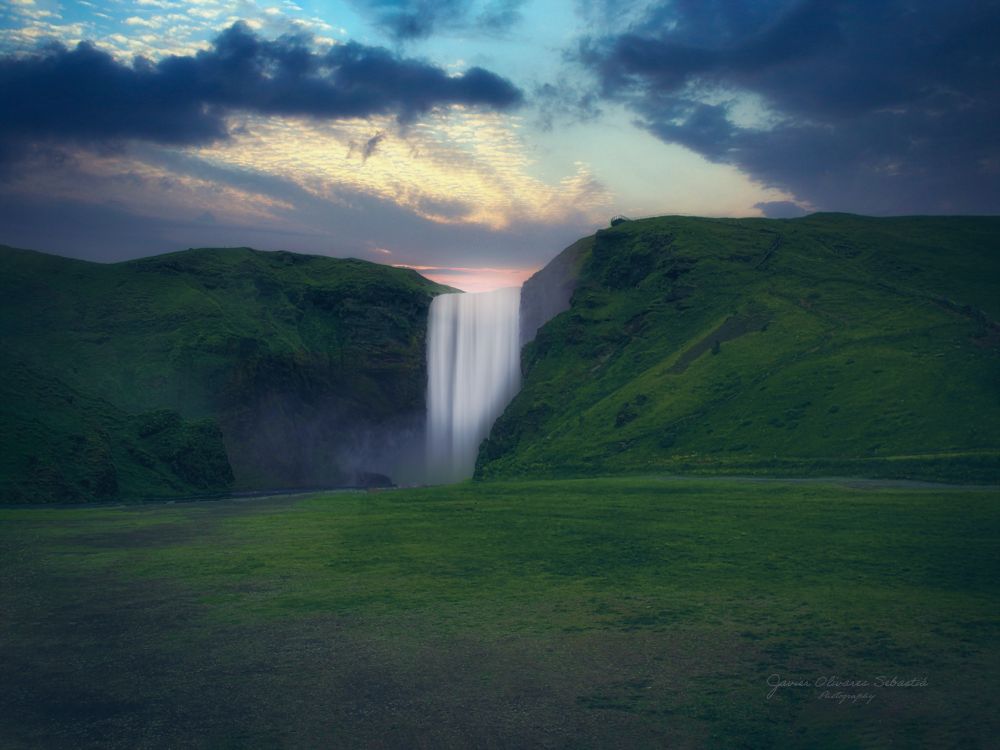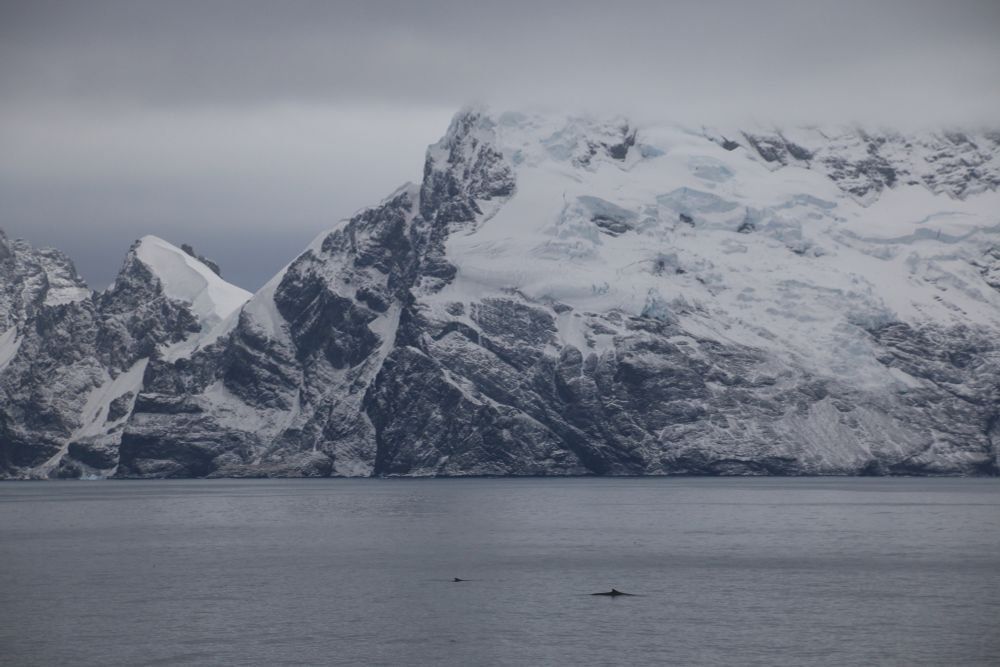
Nature Photography & Landscape Photographer I
North by Northwest.
State of the Climate by @copernicusecmwf.bsky.social between 1993 and 2022, Earth experienced an average sea level increase of around:
+3.3±0.3 mm (globally)
+2–4 mm (in Europe)
This animation shows the mean sea-level trend for the same period.
New scientific study by the Ocean Acoustics Group at AWI suggests breeding grounds.
Whale Song Audios:
You can download examples of bowhead whale songs from our media centre: multimedia.awi.de/pincollectio... @awi.de @helmholtzhzi.bsky.social




New scientific study by the Ocean Acoustics Group at AWI suggests breeding grounds.
Whale Song Audios:
You can download examples of bowhead whale songs from our media centre: multimedia.awi.de/pincollectio... @awi.de @helmholtzhzi.bsky.social
Kirkjubæjarklaustur, Suðurland, Ísland
@visiticeland.bsky.social @photoshop.adobe.com
#landscapephotography #icelandwaterfalls #Suðurland
www.visiticeland.com

Kirkjubæjarklaustur, Suðurland, Ísland
@visiticeland.bsky.social @photoshop.adobe.com
#landscapephotography #icelandwaterfalls #Suðurland
www.visiticeland.com
An international research team led by the University of Rostock is investigating the impact of climate change on biodiversity in Antarctica. @awi.de @helmholtz.de
www.uni-rostock.de/en/




An international research team led by the University of Rostock is investigating the impact of climate change on biodiversity in Antarctica. @awi.de @helmholtz.de
www.uni-rostock.de/en/
Seyðisfjörður, Austurland, Ísland
@visiticeland.bsky.social @euiniceland.bsky.social
#landascapephotogaphy #icelandicwaterfalls #Gufufoss, guidetoiceland.is/travel-icela...

Seyðisfjörður, Austurland, Ísland
@visiticeland.bsky.social @euiniceland.bsky.social
#landascapephotogaphy #icelandicwaterfalls #Gufufoss, guidetoiceland.is/travel-icela...
Norðurland Eystra Region, Ísland
#landscapephotography #icelandicphotos
@visiticeland.bsky.social @icelandgeology.bsky.social
www.inspiredbyiceland.com/visit

Norðurland Eystra Region, Ísland
#landscapephotography #icelandicphotos
@visiticeland.bsky.social @icelandgeology.bsky.social
www.inspiredbyiceland.com/visit
#landscapephotography #streetphotography
@visitnorway.bsky.social @lightroom.adobe.com
www.visitnorway.com/places-to-go...

The bulletin reports that September 2025 was the third-warmest September ever globally, with an average #ERA5 surface air temperature of 16.11°C, which is 0.66°C above the 1991–2020 average for the month.
@copernicusecmwf.bsky.social

The bulletin reports that September 2025 was the third-warmest September ever globally, with an average #ERA5 surface air temperature of 16.11°C, which is 0.66°C above the 1991–2020 average for the month.
@copernicusecmwf.bsky.social
National Park, Austurland
#landscapephotography #icelandicwaterfalls
#travelphotography
@visiticeland.bsky.social

National Park, Austurland
#landscapephotography #icelandicwaterfalls
#travelphotography
@visiticeland.bsky.social

The international and interdisciplinary research team, led by the Alfred Wegener Institute, focused on the summer melting of Arctic sea ice in three different regimes.
@awi.de @helmholtz.de




The international and interdisciplinary research team, led by the Alfred Wegener Institute, focused on the summer melting of Arctic sea ice in three different regimes.
@awi.de @helmholtz.de
A new AWI study shows that an approximately 21 square kilometre meltwater lake has caused gigantic cracks in the ice and that the water flowing off is lifting the glacier
@awi.de @helmholtz.de




A new AWI study shows that an approximately 21 square kilometre meltwater lake has caused gigantic cracks in the ice and that the water flowing off is lifting the glacier
@awi.de @helmholtz.de
Using data from several Earth-observing satellites, including ESA’s CryoSat and the Copernicus Sentinel-1 and Sentinel-2 missions, scientists have discovered that a huge flood beneath the Greenland Ice Sheet @esaearth.esa.int @esa.int
Using data from several Earth-observing satellites, including ESA’s CryoSat and the Copernicus Sentinel-1 and Sentinel-2 missions, scientists have discovered that a huge flood beneath the Greenland Ice Sheet @esaearth.esa.int @esa.int
Norðurland Eystra Region, Ísland
#Iceland #landscapephotography
#PicofTheDay #HúsavikChurch
@adobe.com
www.visiticeland.com

Norðurland Eystra Region, Ísland
#Iceland #landscapephotography
#PicofTheDay #HúsavikChurch
@adobe.com
www.visiticeland.com
As an outlet glacier of Vatnajökull it is closely monitored due to its repeated history of glacial outburst floods which have shaped the surrounding landscape
@ec.europa.eu
perlan.is/articles/ske...

As an outlet glacier of Vatnajökull it is closely monitored due to its repeated history of glacial outburst floods which have shaped the surrounding landscape
@ec.europa.eu
perlan.is/articles/ske...
Norðurland Eystra Region, Ísland
#Iceland #landscapephotography
#PicofTheDay #WhalesWatching
#Travelphotography
www.visiticeland.com @adobe.com

Norðurland Eystra Region, Ísland
#Iceland #landscapephotography
#PicofTheDay #WhalesWatching
#Travelphotography
www.visiticeland.com @adobe.com
The latest Polarstern expedition is off to explore ice floe types from the past, present and future.
On Wednesday, 2 July 2025, the Polarstern will set sail from Tromsø, Norway, embarking on an expedition to the Arctic Ocean. @awi.de @meereisportal.bsky.social




The latest Polarstern expedition is off to explore ice floe types from the past, present and future.
On Wednesday, 2 July 2025, the Polarstern will set sail from Tromsø, Norway, embarking on an expedition to the Arctic Ocean. @awi.de @meereisportal.bsky.social
Phytoplankton blooms occur almost every spring in the English Channel, driven by a combination of environmental factors which converge during the seasonal transition.
@copernicusecmwf.bsky.social @copernicusmarine.bsky.social
@ec.europa.eu #Sentinel-2

Phytoplankton blooms occur almost every spring in the English Channel, driven by a combination of environmental factors which converge during the seasonal transition.
@copernicusecmwf.bsky.social @copernicusmarine.bsky.social
@ec.europa.eu #Sentinel-2
Suðurland, Ísland
#Iceland #skógafoss #waterfall #suðurland
#landscapephotography #PicofTheDay
www.visiticeland.com

Suðurland, Ísland
#Iceland #skógafoss #waterfall #suðurland
#landscapephotography #PicofTheDay
www.visiticeland.com
The Copernicus Climate Change Service (C3S) has published its latest monthly Climate Bulletin, focused on key climate trends in May 2025.
@copernicusecmwf.bsky.social @ec.europa.eu
climate.copernicus.eu/surface-air-...

The Copernicus Climate Change Service (C3S) has published its latest monthly Climate Bulletin, focused on key climate trends in May 2025.
@copernicusecmwf.bsky.social @ec.europa.eu
climate.copernicus.eu/surface-air-...
Acoustic data reveal when and where fishing vessels compete with whales and penguins for krill in the Southern Ocean – and what this entails for the ecosystem.
@awi.de
doi.org/10.1073/pnas...




Acoustic data reveal when and where fishing vessels compete with whales and penguins for krill in the Southern Ocean – and what this entails for the ecosystem.
@awi.de
doi.org/10.1073/pnas...
Norðurland Eystra Region, Ísland
#Seascapephotography #Whales #Iceland
#Travelphotography #PicoftheDay
@adobe.com

Norðurland Eystra Region, Ísland
#Seascapephotography #Whales #Iceland
#Travelphotography #PicoftheDay
@adobe.com
Plastic credits are being promoted as an innovative way of addressing plastic pollution, but the credits could have exactly the opposite effect and exacerbate the crisis, warns an international consortium of scientists. @awi.de
www.awi.de/en/focus/mar...



Plastic credits are being promoted as an innovative way of addressing plastic pollution, but the credits could have exactly the opposite effect and exacerbate the crisis, warns an international consortium of scientists. @awi.de
www.awi.de/en/focus/mar...
Gorbeia Natural Park, Euskadi
#Landscapephotography #Naturephotography #Beechforest
#picoftheday #Euskadi @adobe.com
turismovasco.com/bizkaia/que-...

Gorbeia Natural Park, Euskadi
#Landscapephotography #Naturephotography #Beechforest
#picoftheday #Euskadi @adobe.com
turismovasco.com/bizkaia/que-...
Polarstern expedition is off to the AWI-Hausgarten long-term observatory.
On 29 May 2025, the Polarstern research vessel set sail from Bremerhaven for the Arctic. @awi.de
www.awi.de/en/about-us/...
follow-polarstern.awi.de




Polarstern expedition is off to the AWI-Hausgarten long-term observatory.
On 29 May 2025, the Polarstern research vessel set sail from Bremerhaven for the Arctic. @awi.de
www.awi.de/en/about-us/...
follow-polarstern.awi.de
Kingdom of Navarra, Spain
#Landscapephotography #Naturephotography
#Navarra #Forest #picoftheday
@adobe.com

Kingdom of Navarra, Spain
#Landscapephotography #Naturephotography
#Navarra #Forest #picoftheday
@adobe.com

